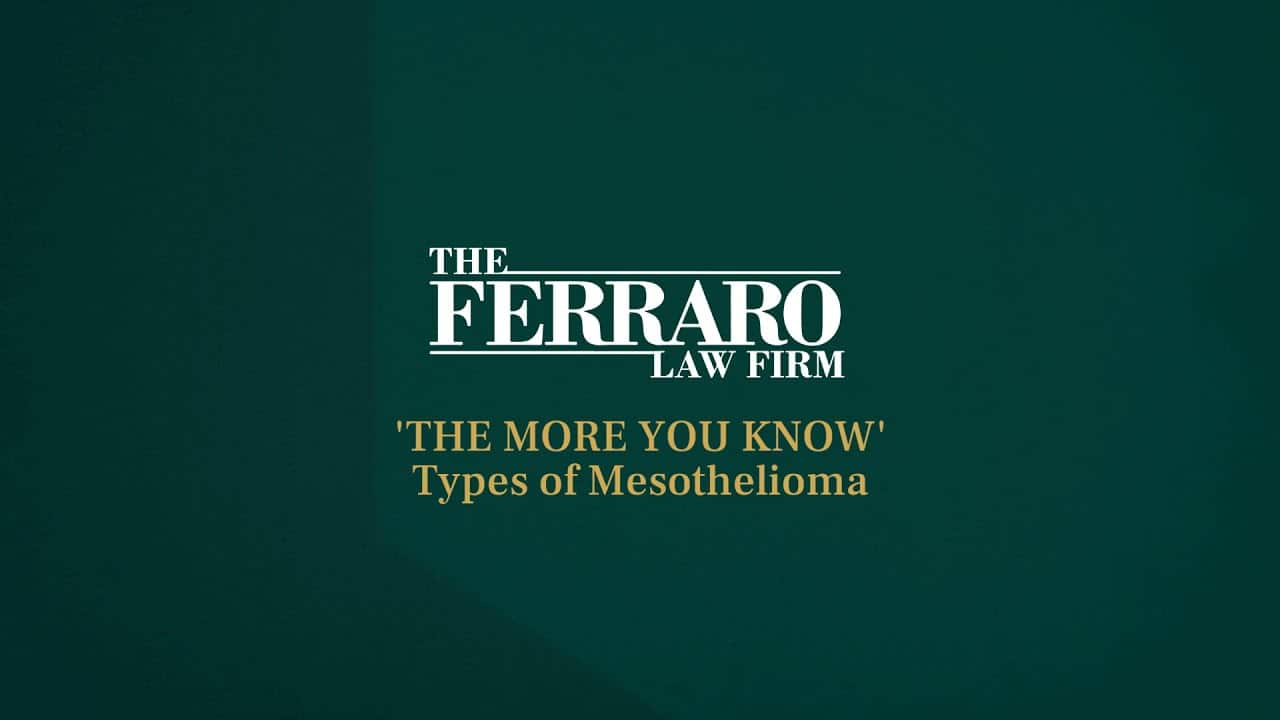If you were seriously injured, remember that it is crucial to choose the right law firm to represent your interests. We have been doing this for more than three decades, and have the resources you need to challenge any opponent.
High-Risk Asbestos Occupations: What To Do If You Have Been Exposed on a Worksite
Today, asbestos has a reputation for being a dangerous, cancer-causing substance that one should avoid at all costs—and rightfully so. Until just a few decades ago, asbestos was considered a “magical mineral,” and many workers came into contact with it frequently.
Asbestos is a mineral fiber that is strong, naturally resistant to heat and corrosion, and flame-retardant. Because of these qualities, and its low cost of mining and production, asbestos was a valuable material for building products, insulation for pipes, and even household appliances.
At this time, the general public was not aware of the truth about asbestos: that exposure to the mineral is linked to an increased risk of lung cancer, permanent lung damage, and a disease known as mesothelioma. Scientists knew about the harms of asbestos as early as the 1930s, but it was not until the 1970s that the United States passed regulations limiting the use of asbestos.
Unfortunately, asbestos is still not banned in the United States and the mineral’s deadly legacy lives on. It can still be found in some older buildings built before regulations were put in place. According to the Environmental Protection Agency, certain materials manufactured today still contain asbestos including insulation, tiles, shingles, hot water pipes, and automobile clutches and breaks.
This means that, even now, workers are being exposed to asbestos at worksites. Unfortunately, they may not begin to experience symptoms until years or even decades down the line.
Table of Contents
What is Mesothelioma?
Mesothelioma is an aggressive and deadly form of cancer, most commonly caused by exposure to asbestos. When materials containing asbestos are broken apart, tiny fibers of asbestos that are too small to see with the naked eye can become airborne. These fibers can be inhaled by those working with asbestos. Over time, fibers trapped in the lungs can cause scarring and inflammation. This can lead to mesothelioma.
Mesothelioma can take 10 to 40 years to become symptomatic. Unfortunately, this is why some workers often do not discover they have the disease until long after they have retired from work. Symptoms include:
- Chest pain
- Painful coughing
- Shortness of breath
- Unusual lumps of tissue under the skin on your chest
- Unexplained weight loss
Sadly, mesothelioma remains incurable. Fortunately, scientists are hard at work researching effective mesothelioma treatments for the disease.
Occupations with the Historically High Rates of Asbestos Exposure
An estimated 27 million workers were exposed to asbestos fibers between 1940 and 1979. According to the CDC, the occupations that were most heavily exposed to asbestos include (but are not limited to) the following:
Auto Mechanics
Automobile mechanics may have encountered asbestos while doing maintenance work on car brakes and clutches. Workers who build or do repair work on cars are at high risk of asbestos exposure because car brakes and clutches still contain asbestos today.
Boilermakers
Boilermakers may have breathed in deadly asbestos fibers while working on pipes, gaskets, and adhesives containing heat-resistant asbestos. Some old boiler rooms in homes, schools, and office buildings still have asbestos covering pipes and boilers for insulation. This can pose a risk to anyone doing boiler maintenance.
Carpenters
Carpenters are surrounded by products that contain asbestos while on a worksite, including insulation, roofing material, and floor tiles. Many of these building products still carry asbestos today and can put even the youngest carpenters at risk of lung cancer.
Construction Workers
Construction workers used to be exposed to asbestos through cement powders and plasters while constructing buildings. While these products no longer contain asbestos, an estimated 1.3 million construction workers still come into contact with asbestos while working each year (according to the CDC). This is because construction workers are exposed to asbestos fibers doing demolitions and remodeling work on older buildings.
Firefighters
Firefighters were, and still are, among the workers most likely to come into contact with asbestos. Anytime firefighters are called to respond to a fire in an old home or building, they can be put at risk of inhaling asbestos fibers found in insulation, tiling, and flooring. Most notably, firefighters and other brave first responders were exposed to the deadly fibers during the 9/11 attacks on the World Trade Center. In the aftermath of this tragedy, an enormous amount of asbestos was released into the air.
Plumbers
Similar to boilermakers, plumbers could have been exposed to asbestos products used to insulate pipes against heat and erosion. Like construction workers, some plumbers are still exposed to asbestos when working in old buildings and homes.
U.S. Navy Service Members
Members of the U.S. Navy may have been exposed to multiple products containing asbestos on Navy ships. Service workers who performed boiler-room maintenance had especially high exposure rates to asbestos.
What these workers all have in common is that they either used or did routine maintenance on products that contained asbestos. This frequent occupational exposure to asbestos led to higher rates of mesothelioma among these workers.
Sadly, even second-hand asbestos exposure can lead to mesothelioma. Some spouses and children of workers in these high-risk occupations have been diagnosed with the deadly disease decades after the initial exposure. Asbestos fibers are small enough to become trapped in clothing and tools and can be brought home by workers. From there, anyone in the household could be exposed.
Asbestos Trust Funds
The most tragic thing one may discover in the aftermath of asbestos’ widespread use is that some companies knew about the dangers of asbestos but continued to put workers at risk of exposure in order to pursue profits.
According to the Environmental Working Group, internal documents dating back to the 1940s show that, although some companies knew asbestos could be deadly, they failed to disclose this information to workers. When lawsuits began to pile up claiming harm due to asbestos exposure, many of these companies were unprepared to face the consequences for their alleged actions. In some cases, these companies quickly filed for bankruptcy to avoid large payouts.
It is for this reason that negligent companies that exposed workers to asbestos were ordered by courts to establish asbestos trust funds in order to receive bankruptcy protection. This ensured that victims of asbestos exposure could receive compensation for any asbestos-related diseases—even if they developed decades after initial exposure. Billions of dollars still remain in asbestos trust funds today.
If you believe you were exposed to asbestos on a worksite, you may be entitled to compensation. Call 888-554-2030 to learn how the attorneys at The Ferraro Law Firm can help you. Even if you are not located in the state of Florida, we take asbestos cases nationwide.
Some Occupations Still Face Asbestos Exposure Risks Today
Although asbestos exposure risk has gone down considerably now that the dangers of asbestos are well-known, workers can still be exposed to asbestos even today. In fact, according to the World Health Organization (WHO), an estimated 125 million people are still exposed to asbestos every year.
Asbestos continues to kill up to 15,000 Americans every year because it is still used in insulation, floor products, roof shingles, and brake linings. Deadly asbestos fibers can also be unleashed whenever construction or maintenance is done on an older building containing asbestos products.
Sadly, this is why many of the occupations that had the highest rates of asbestos exposure decades ago continue to endanger workers to this day.
If you believe you have been exposed to asbestos at a worksite, it is important to speak with your supervisor about your concerns for workplace safety. Any amount of asbestos exposure can be dangerous and your employer, property owners, and other relevant contractors are obligated to provide a safe workplace for you.
What To Do If You Have Been Exposed to Asbestos
Although millions are still exposed to asbestos annually, the majority of mesothelioma and asbestos-related disease diagnoses come years or even decades after the worker was initially exposed. You may not remember working near asbestos after so many years, but the dangerous fibers of asbestos can still remain in your lungs and stomach.
If you were exposed to asbestos on a worksite, no matter how long ago, the first thing you should do is contact your doctor. A doctor can help closely monitor you for symptoms in the future. If you have developed symptoms of mesothelioma, such as chest pain or a chronic cough, a doctor can provide a diagnosis through chest X-rays, computerized tomography (CT), or a biopsy test.
If you receive a confirmed diagnosis of mesothelioma or any other asbestos-related disease from your doctor, it may be wise to call an attorney as soon as possible to review your legal options.
Frequently Asked Questions: Mesothelioma & Asbestos
Is asbestos dangerous?
What diseases can asbestos exposure cause?
Have You Been Diagnosed with Mesothelioma?
If you developed mesothelioma due to workplace exposure, the attorneys of The Ferraro Law Firm can help. The Ferraro Law Firm is one of the top five asbestos and mesothelioma law firms in the nation. Our attorneys have recovered billions of dollars for families who have suffered after a mesothelioma diagnosis.
Our firm accepts asbestos cases nationwide. Our asbestos attorneys have helped families across the country recover compensation from asbestos funds to help cover medical costs, lost wages, and more. Call 888-554-2030 or fill out a free case evaluation online.






